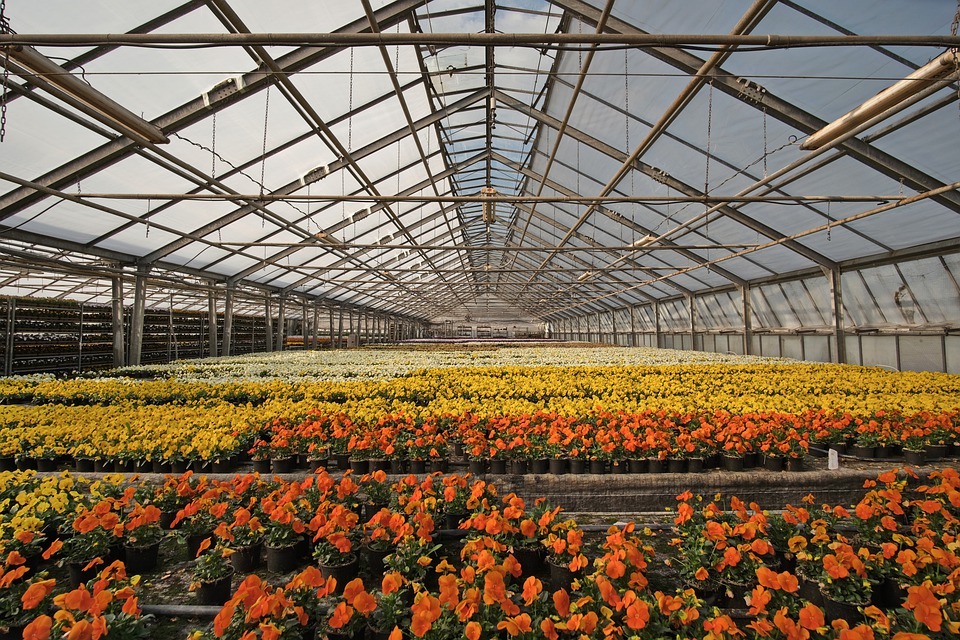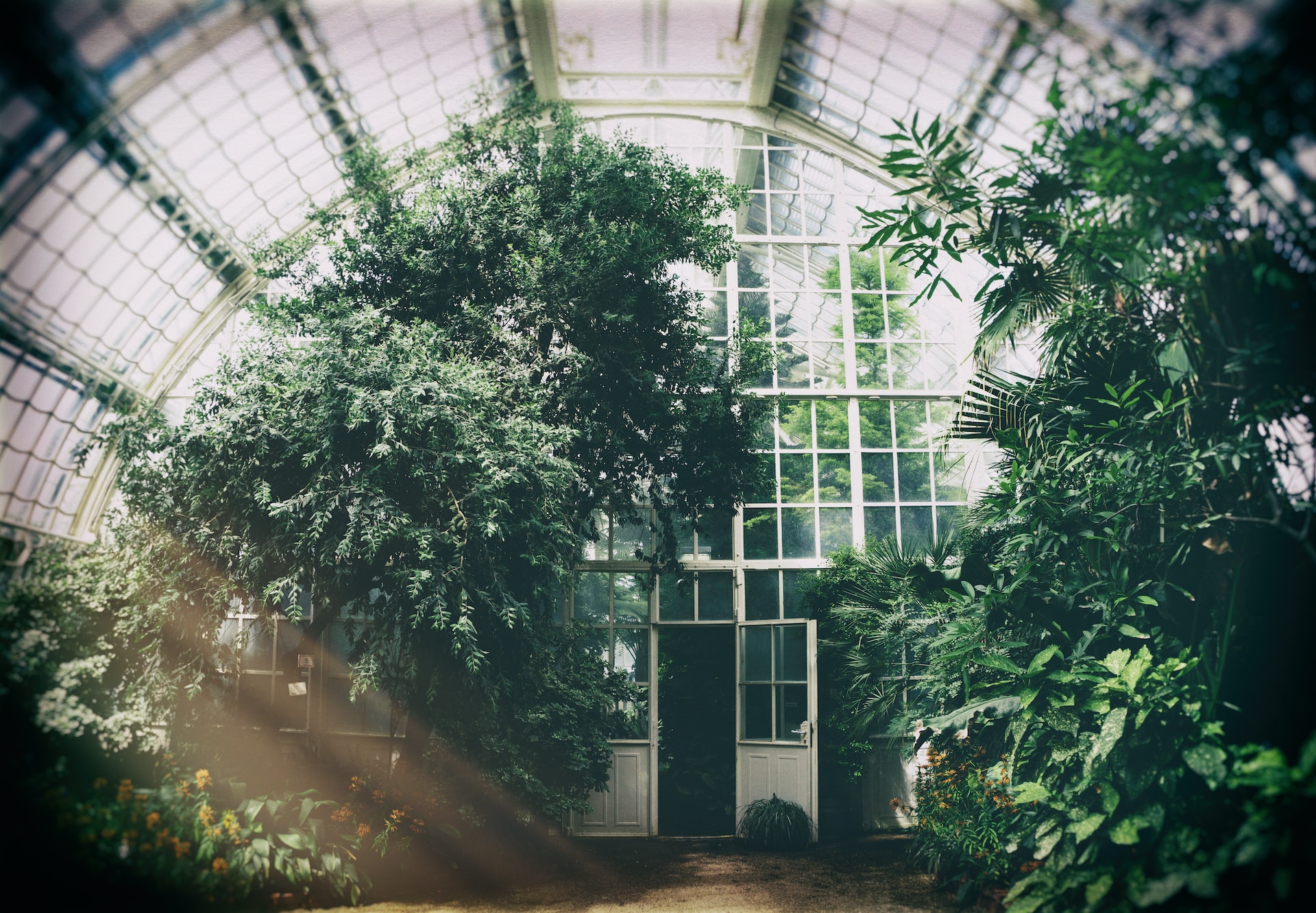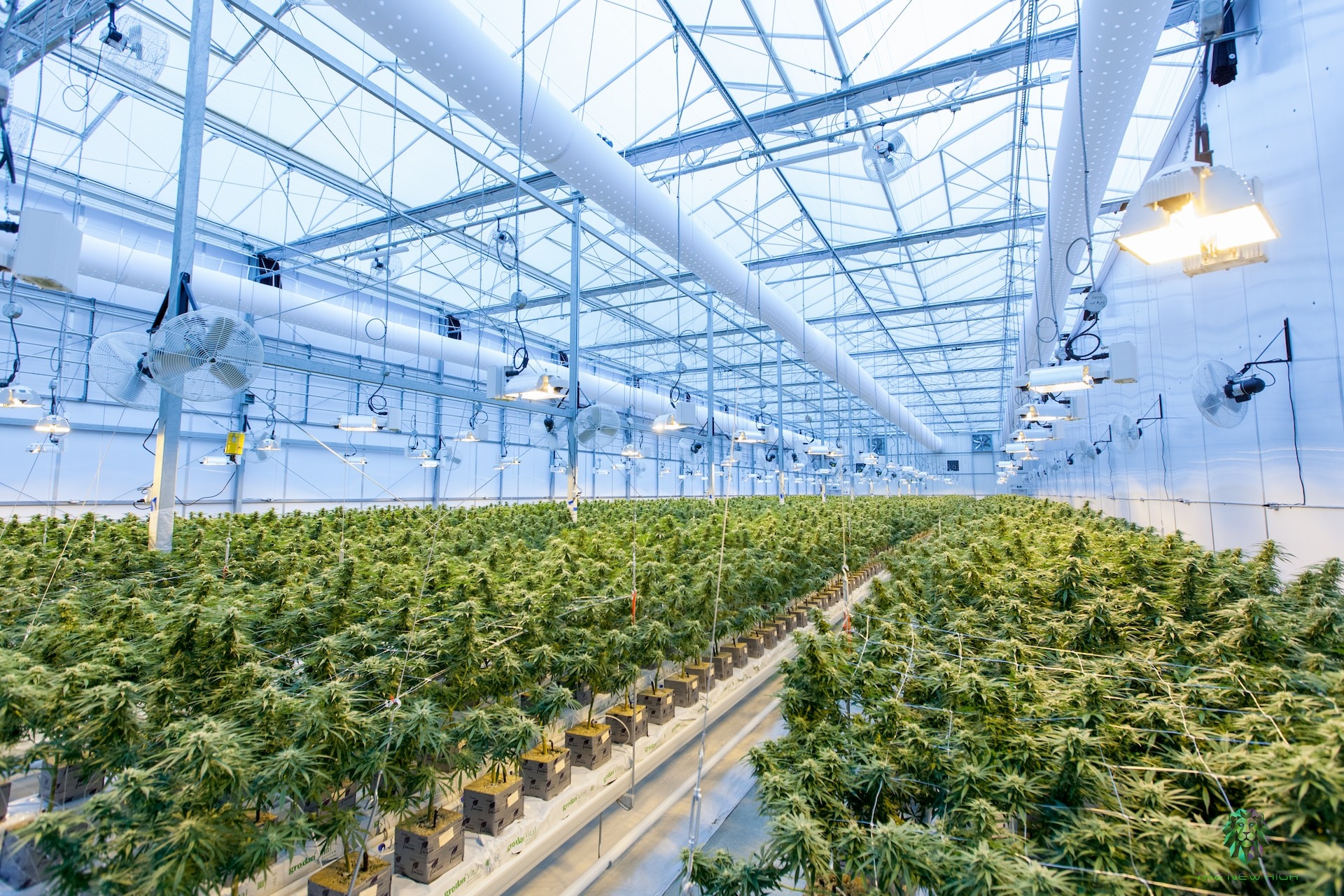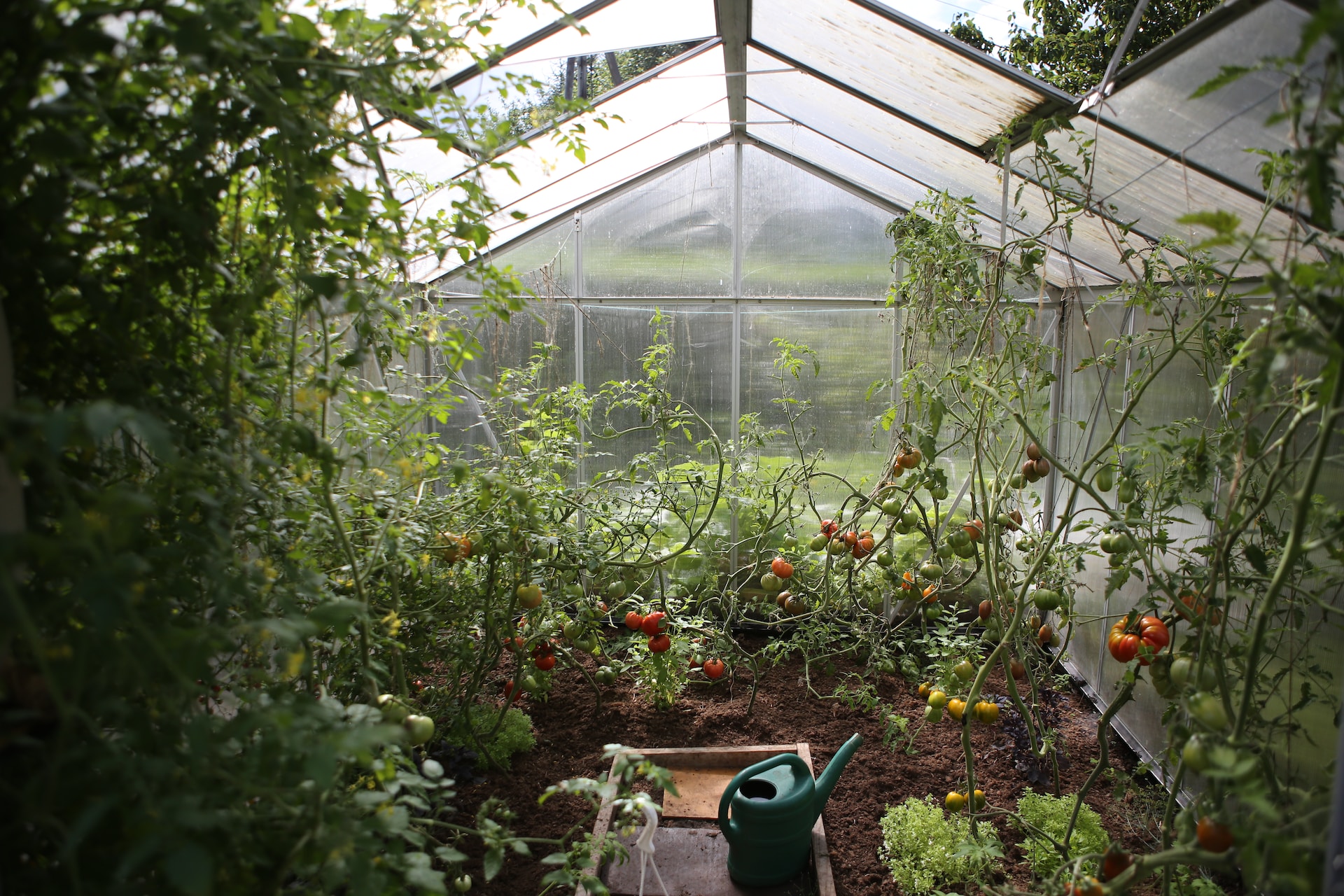While it is unquestionably true that a site with a greenhouse is more visually stunning than one without one, the primary reason for having a greenhouse is to shelter one’s plants from the inclement climate during all four seasons of the year. Insulation is among the most critical elements of any greenhouse because we want as much of the energy that is put into the construction to remain inside the structure as possible. As a result, what information do you require regarding greenhouse insulation?
What is a Greenhouse?
A greenhouse, often known as a glasshouse, is a structure used to shelter delicate or out-of-season plants from extreme cold or heat. In the 17th century, greenhouses were simply brick or wood structures with a standard amount of window space and a heating source. The greenhouse changed into a glass-roofed and glass-walled building with a simple wooden or metal framework as glass grew more affordable and more sophisticated heating options became available. The greenhouse had transformed by the middle of the 19th century from a simple haven from an unfriendly climate to a controlled environment tailored to the requirements of specific plants.
Glasshouse culture greatly expanded in England and other countries during the 19th century as the availability of exotic plants greatly increased. While smaller structures are frequently used by enthusiasts, collectors, and home gardeners, larger greenhouses are crucial for agriculture, horticulture, and botanical study.
The modern greenhouse is typically a framed glass or plastic enclosure used to grow fruits, vegetables, flowers, and any other plants that need specialized temperature conditions. The span-type greenhouse, which has a double-sloped, or A-shaped, roof, and the lean-to greenhouse, which has a single roof slope and leans against the side of a building, are the two primary structural shapes. Sometimes, two or more span-type greenhouses are united side by side. This results in fewer external walls and lower heating expenses. The sides and roof of a greenhouse have a significant amount of windows, exposing the plants to natural light for most of the day.
Glass has been used for glazing traditionally, although plastic films made of polyethylene or polyvinyl are also widely used, as is fiberglass. The structure’s framing is built of materials like redwood, cedar, or cypress, as well as aluminum, galvanized steel, and these materials. A greenhouse receives heat in two ways: naturally from the Sun’s rays and artificially from the circulation of steam, hot water, or hot air. A greenhouse needs some sort of ventilation system since it can get too hot or too cold. Typically, this comprises of roof apertures that can be controlled manually or automatically and end-wall openings where electric fans take air in and circulate it inside the greenhouse.
Greenhouse insulation ideas that are both ideal and functional
The first step in insulating a greenhouse is to seal off any drafts that may be present. That means that vents & doors should be properly installed, that gaps in the framework should be sealed, and that all damaged glass should be replaced.
Additionally, make certain that the ground covering is neatly tucked into the corners of all of your greenhouse’s walls. The few metres of carpeting you may have conserved on the edges may end up costing you several times more in the long run, both in terms of heating as well as weeding.
Insulation that reflects light
This type of Spray foam proportioner serves the primary aim of decreasing radiant heat transmission across those unoccupied open spaces, which is a substantial contributor to both heat gain in the summer & heat loss in the winter. These are intended to provide a surprisingly efficient and reasonably priced means of assisting in the maintenance of BTUs. It helps to keep mold, mildew, pests, & rodents at bay.
The northern end of the greenhouse will be insulated with foil to keep the heat in
The installation of insulation material foil on the northern side of the greenhouse ensures that the light and heat are returned to the greenhouse structure. The thermal insulation foil design, which consists of two layers of silvery foil wrapped around with a bubble polymer coating, is responsible for this activity.
When the Thermo foil is put on the interior of the greenhouse roof, it becomes feasible to keep the heat in for longer periods of time, which is beneficial.
Using Insulation at night
There are a variety of materials that can be used to trap heat build-up throughout the day in order to keep the greenhouse safe and warm at night. Thermal blinds & screens are examples of materials that are specifically designed to trap excess heat generated during the day. They can, however, be prohibitively expensive.
What exactly qualifies as effective greenhouse insulation?
Good insulation is what offers your plants a regulated atmosphere that allows them to grow in the ideal temperature and relative humidity for their particular environment. Regardless of the architecture of the greenhouses, proper installation will not only safeguard your valuable plants but will also allow you to reduce your energy consumption by a significant amount. Let’s take a deeper look at each and every component of the greenhouse that contributes to effective insulation.
Polycarbonate
Nowadays, polycarbonate sheets have earned a great reputation for their durability. It provides a wide range of advantages, particularly in the field of greenhouse insulation. It’s lighter, UV-resistant, flexible, and almost indestructible, making it an excellent choice for outdoor use. Even at temperatures as low as -40°F and so as high as 284°F, polycarbonate retains its excellent properties.
The primary source of heat loss is inadequately insulated sidewalls and roofs. The selection of the appropriate glazing for greenhouse insulation is so critical.
Advantages of a Polycarbonate Greenhouse Over Glass
Glass panels have been utilized in greenhouses traditionally. Nonetheless, improvements have been made in recent years. Enter polycarbonate, which has numerous qualities that are now on par with or better than glass.
Another element is glazing, which helps to provide the ideal environment for a variety of plants. More light will enter the building with greater windows, which will also make the greens happier.
What distinguishes polycarbonate greenhouses from glass greenhouses, then? Here are the main advantages:
1. Better Insulation
In greenhouses, the sun’s energy is used to heat the space and extend the growth season. Without maintaining heat, a device is essentially useless. For starters, heat retention is crucial for controlled environments and optimal performance.
Glass heats up and cools down quickly, but it can’t keep heat for very long. As a result, during the colder months, this might be devastating for plants, such as tropical plants.
Moreover, polycarbonate material is more economical. It works well at insulating noise in addition to heat. Thus, polycarbonate is the way to go if you want to give plants a calm atmosphere!
2. Longer Lasting
Nearly impossible to break, polycarbonate. It has a definite safety benefit over glass due to its durability. Extreme force and bad weather can be withstood, increasing longevity.
This indicates that the polycarbonate windows may withstand more pressure before cracking. Moreover, the substance is substantially lighter than glass. The polycarbonate glazing is much less prone to break if dropped. For example, a football may have been kicked into the window. In contrast to a glass window, which has a higher risk of breaking, you are unlikely to notice any damage.
3. Shatter-resistant
Accidents do occur. Thus, having a building with durable plastic walls and roofing is essential. Glass can easily be broken by weather-related factors and forces like wind and hail.
Even under the most rigorous tests, polycarbonate holds up. Because of this, the garden building can withstand significant pressure. For instance, corrugated polycarbonate panels are practically unbreakable.
Sturdy polycarbonate glazing can lower the risk factor in daily use.
4. Low Maintenance
In contrast to glass, polycarbonate constructions require little to no maintenance. However this does not imply that maintenance is no longer required. That does, but you aren’t required to do it constantly. Only clean it when absolutely essential to preserve the traditional greenhouse appearance.
5. Better light diffusion and UV protection
Glass is much thinner overall than plastic, which produces superior light diffusion. Hence, more natural light will enter, especially if the windows are made of polycarbonate. This ensures that your lovely plants receive all the necessary sun exposure.
Moreover, polycarbonate offers superior plant protection from UV solar radiation. This is as a result of the substance’s inherent capacity as a UV filter.
6. Easier Installation
Polycarbonate is more lightweight and less fragile than glass. Larger glass panes’ weight and size may make handling them challenging. The majority of glass greenhouses also need professional assembly, which frequently takes a lot longer.
In comparison, polycarbonate may be put in larger portions and is lighter. However, extra caution is required to avoid harming the sheet, particularly the edges, when doing so. At any edges that have been cut, it must also be thoroughly sealed. Otherwisez, bugs, mold, and moisture can enter the void.
A Polycarbonate unit would make installation easy for you and a friend to complete. Unlike with glass panels, you won’t have to pay an additional fee for hiring a contractor. Also, the majority are prefabricated and feature modular designs, which will enable quick expansion.
7. Customizable wooden frame
Typically, a metal frame would be present in glass greenhouses. Nevertheless, the polycarbonate constructions’ hardwood frames are excited about the potential for painting!
The wooden frame can be painted or customized to give it a unique look. This allows you greater freedom to decorate your unit anyway you like and give it more life.
There are also polycarbonate pieces with sturdy aluminum framing available. A stronger structure is guaranteed by the combination of an aluminum frame and a galvanized steel foundation. Certain models include a green and grey color scheme, which enhances the expression of current style.
Such a nice perk if you’re a green thumb fond of art!
8. Cost-effective
Typically, a metal frame would be present in glass greenhouses. Nevertheless, the polycarbonate constructions’ hardwood frames are exciting about the potential for painting! Depending on the supplier and the quality of the material, the price for both designs can change. You may certainly save a lot of money by creating your own greenhouse out of recycled glass panels. Yet, this can be challenging and requires knowledge.
You’re in luck because there are many Polycarbonate choices available and they are far less expensive. Get a high-quality item from a reputable retailer to ensure a longer lifespan.
Seals for insulating materials
The heat that has accumulated throughout the day can be contained within the greenhouse at night to keep it from spreading. It is at this point that the seals between the frame as well as the panels become important. In order to avoid heat loss, certain greenhouses are equipped with rubber gaskets or silicone sealants. Several DIY gardeners use tape to seal the gaps, but this is only a short-term fix for preventing drafts.
The most effective long-term option for preventing drafts is to use a silicone sealer to plug up the cracks at the edges of the frame. Rubber sealing or glazing strips are required on vents, frames, and doors in order for them to close tightly. It is critical to keep drafts out of the greenhouse since they can cause irreversible damage to the plant if left unchecked.
Conclusion
You can insulate the outdoor border of your greenhouse with a piece of Styrofoam board (approximately 2 inches thick) or foam. It must be positioned vertically and extend at least one foot below the surface of the ground. A deeper foundation may be necessary if you live in zone 4 or a lower climate zone. In order to protect your greenhouse base, place the boards against the surface.




